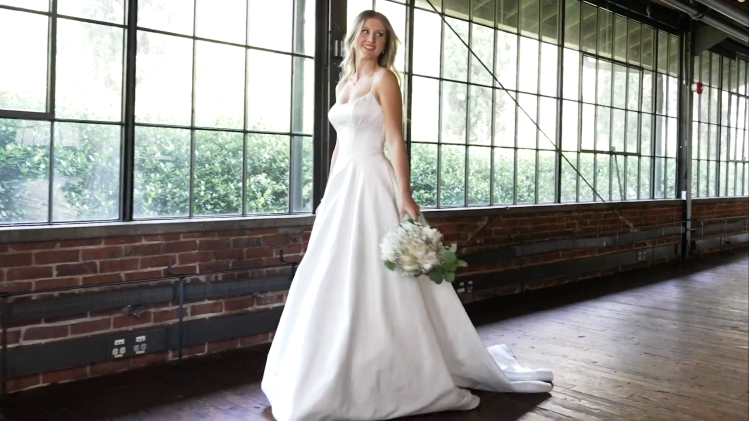David’s Bridal Revives with AI After Two Bankruptcies

▼ Summary
– David’s Bridal is implementing Pearl Planner, an AI-powered wedding planning platform, to automate tasks, recommend vendors, and personalize wedding plans for brides.
– The company’s AI transformation is led by CEO Kelly Cook and President Elina Vilk, who brought in tech veteran Mike Bal to build the system from scratch.
– Pearl Planner uses a knowledge graph architecture to analyze brides’ preferences and streamline planning, addressing emotional needs like feeling heard in the process.
– The platform operates as a separate business unit, generating revenue through vendor subscriptions and aiming for measurable ROI in a traditionally low-margin industry.
– David’s Bridal’s strategy offers insights for retail revival, emphasizing business model reinvention, leveraging in-store data, and addressing emotional needs with AI.
Walking into a David’s Bridal store in Delray Beach, Florida, a bride-to-be interacts with a 65-inch touchscreen, crafting her dream wedding vision board. Behind the scenes, artificial intelligence quietly analyzes her choices, creating a detailed profile that connects her with vendors, suggests products, and even generates a customized wedding plan. This seamless integration of AI marks a bold new chapter for the bridal retailer, which has faced two bankruptcies in recent years.
For overwhelmed brides juggling hundreds of planning tasks, Pearl Planner, David’s Bridal’s AI-powered platform, promises to simplify the process. It automates timelines, adjusts schedules when plans shift, and eliminates the chaos of outdated spreadsheets. This innovation represents a high-stakes gamble, one that could determine whether the company survives in an industry where thousands of stores have shuttered.
The retail landscape has been brutal since the mid-2010s, with over 133 major bankruptcies and 57,000 store closures between 2018 and 2024. David’s Bridal narrowly avoided liquidation in 2023 when investment firm CION acquired its assets and injected $20 million in fresh funding. Now, under CEO Kelly Cook, the company is pivoting from traditional retail to a tech-driven wedding platform.
Cook made an unconventional hire to lead this transformation, Elina Vilk, a Silicon Valley veteran with decades in digital payments and marketing at companies like eBay, PayPal, and Meta. “I’m probably not the first choice, but that’s by design,” Vilk admitted. Her outsider perspective was exactly what David’s needed to reimagine its future.
Building an AI Team from Scratch
Vilk’s first challenge was assembling a team with no existing AI expertise. She recruited Mike Bal, a technologist with experience at Automattic and WooCommerce, despite his initial hesitation. “My wife’s a therapist, she doesn’t like weddings,” Bal joked. But Vilk’s vision won him over.
Rather than isolating AI specialists in a single department, Vilk embedded tech talent across the company. This distributed approach accelerated innovation by making digital transformation everyone’s responsibility. Key benefits included:
- Resource optimization – Leveraging existing teams instead of hiring new staff.
- The Tech Behind the Transformation Bal faced tight deadlines and limited resources to build Pearl Planner.
- Traditional AI methods like retrieval-augmented generation (RAG) weren’t enough
- Wedding planning required understanding nuanced connections between styles, colors, and themes. His solution? A knowledge graph architecture using Neo4j, which maps relationships between preferences to deliver hyper-personalized recommendations.
- The system processes visual inputs from brides, translating Pinterest boards into actionable insights for vendors. It even gamifies style selection, refining recommendations as users interact. “Brides just need someone to listen and remember what’s important to them,” Bal noted. “That’s the human problem we’re solving.”
Proving AI’s ROI For a company emerging from bankruptcy, every investment must show clear returns. Pearl Planner operates as a standalone business unit, generating revenue through vendor subscriptions rather than just dress sales. Photographers, venues, and planners pay $20–$300 monthly for premium placement.
Vilk applies a disciplined approach to AI adoption, starting small to validate cost savings before scaling. “You can’t just replace everything and hope for the best,” she emphasized.
What’s Next?
Pearl Planner’s public launch is set for early summer, with a Pro version for wedding planners arriving this fall. Future updates will include voice-enabled planning and deeper integrations with partners like Shutterfly and Google.
David’s Bridal’s revival offers lessons for struggling retailers:
- Reinvent the business model – Shift from selling products to facilitating connections.
- Leverage physical stores as data hubs – In-person interactions provide rich, high-intent insights.
- Solve emotional pain points – AI should make customers feel understood, not just efficient.
For a company twice on the brink, this AI-driven pivot isn’t just about survival, it’s a blueprint for retail’s future.
(Source: VentureBeat)


